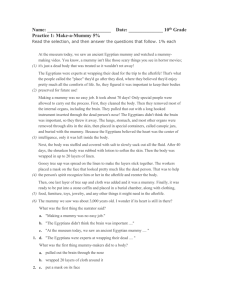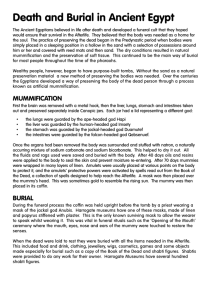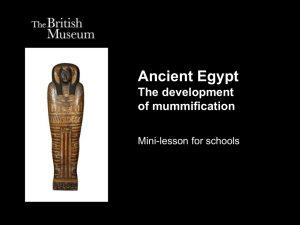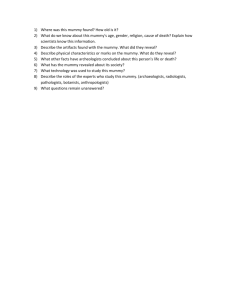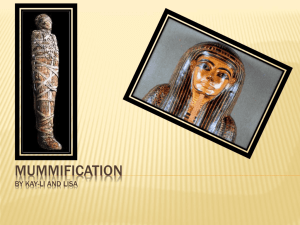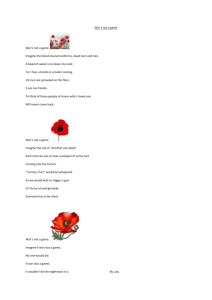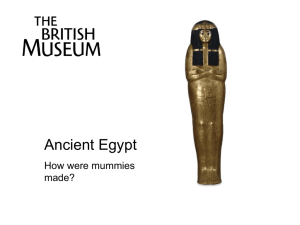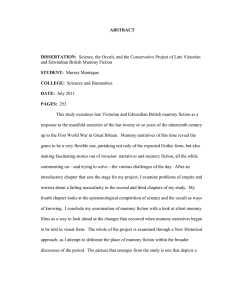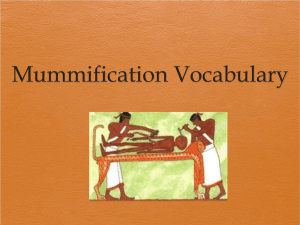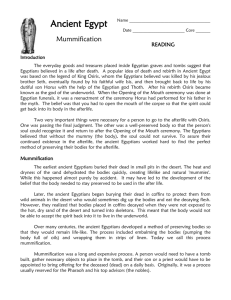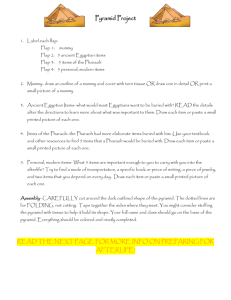How to Make a Mummy
advertisement
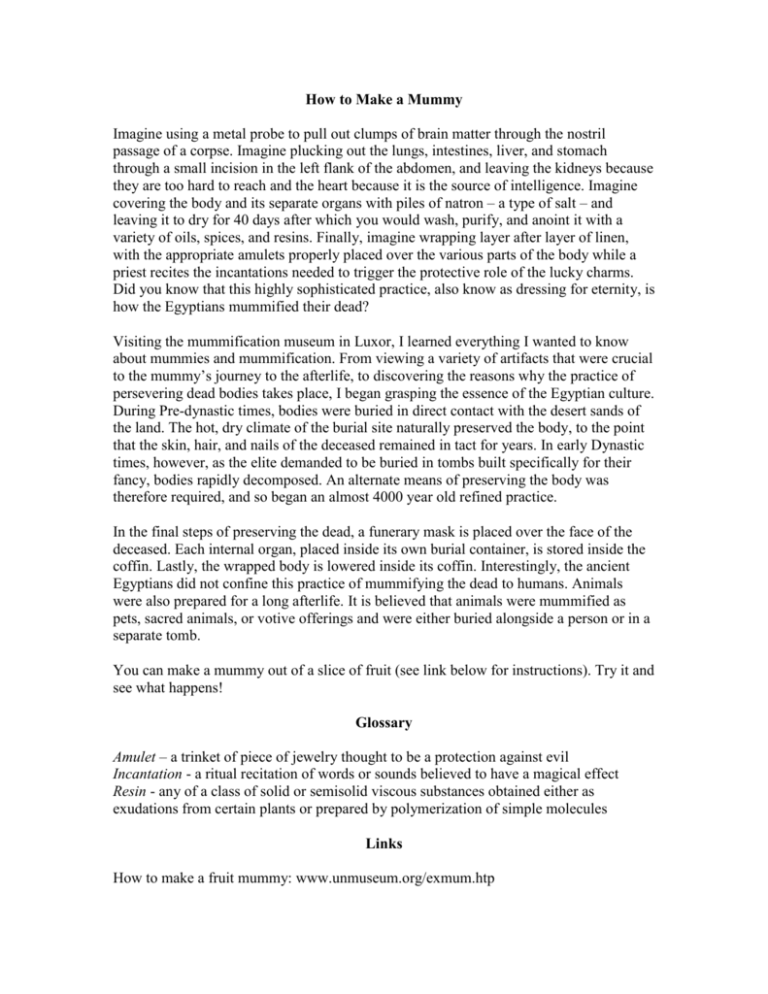
How to Make a Mummy Imagine using a metal probe to pull out clumps of brain matter through the nostril passage of a corpse. Imagine plucking out the lungs, intestines, liver, and stomach through a small incision in the left flank of the abdomen, and leaving the kidneys because they are too hard to reach and the heart because it is the source of intelligence. Imagine covering the body and its separate organs with piles of natron – a type of salt – and leaving it to dry for 40 days after which you would wash, purify, and anoint it with a variety of oils, spices, and resins. Finally, imagine wrapping layer after layer of linen, with the appropriate amulets properly placed over the various parts of the body while a priest recites the incantations needed to trigger the protective role of the lucky charms. Did you know that this highly sophisticated practice, also know as dressing for eternity, is how the Egyptians mummified their dead? Visiting the mummification museum in Luxor, I learned everything I wanted to know about mummies and mummification. From viewing a variety of artifacts that were crucial to the mummy’s journey to the afterlife, to discovering the reasons why the practice of persevering dead bodies takes place, I began grasping the essence of the Egyptian culture. During Pre-dynastic times, bodies were buried in direct contact with the desert sands of the land. The hot, dry climate of the burial site naturally preserved the body, to the point that the skin, hair, and nails of the deceased remained in tact for years. In early Dynastic times, however, as the elite demanded to be buried in tombs built specifically for their fancy, bodies rapidly decomposed. An alternate means of preserving the body was therefore required, and so began an almost 4000 year old refined practice. In the final steps of preserving the dead, a funerary mask is placed over the face of the deceased. Each internal organ, placed inside its own burial container, is stored inside the coffin. Lastly, the wrapped body is lowered inside its coffin. Interestingly, the ancient Egyptians did not confine this practice of mummifying the dead to humans. Animals were also prepared for a long afterlife. It is believed that animals were mummified as pets, sacred animals, or votive offerings and were either buried alongside a person or in a separate tomb. You can make a mummy out of a slice of fruit (see link below for instructions). Try it and see what happens! Glossary Amulet – a trinket of piece of jewelry thought to be a protection against evil Incantation - a ritual recitation of words or sounds believed to have a magical effect Resin - any of a class of solid or semisolid viscous substances obtained either as exudations from certain plants or prepared by polymerization of simple molecules Links How to make a fruit mummy: www.unmuseum.org/exmum.htp
